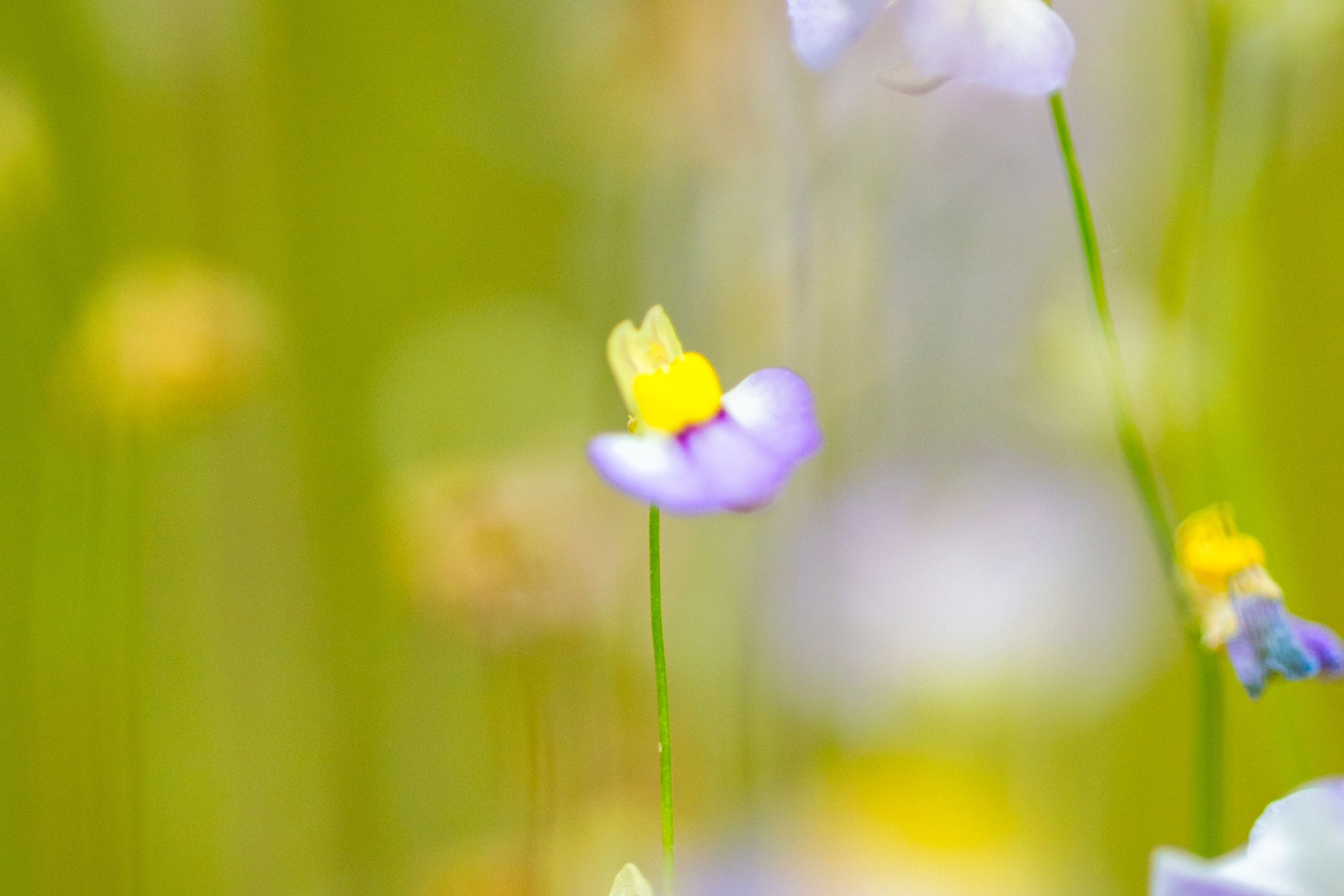Leaden bladderwort
(Utricularia livida)

Description
Utricularia livida, the leaden bladderwort, is a species of flowering plant in the bladderwort family, native to central and southern Africa, and Mexico. Growing to 50 cm (20 in) tall and broad, it is a carnivorous perennial. It was originally described and published by Ernst Heinrich Friedrich Meyer in 1837. The Latin specific epithet livida means “pale” or “lead-coloured”, referring to the colour of the flowers. As with other members of its family, the leaf assembly is below ground, where carnivory occurs. Tiny bladders consume micro-organisms which multiply in wet soil. Above ground it consists of kidney-shaped, pale lavender or white flowers on straight slender stems. Flowering occurs mainly during the summer, but may be triggered at any time after a dry period. Utricularia livida can be found in Angola, the Democratic Republic of the Congo, Ethiopia, Kenya, Lesotho, Madagascar, Malawi, Mozambique, Rwanda, Somalia, South Africa, Sudan, Eswatini, Tanzania, Uganda, Zambia, and Zimbabwe. It also has a widespread native range in Mexico. It grows as a terrestrial plant in boggy areas or shallow soils over rock at altitudes from near sea level to 2,830 m (9,285 ft). Like its relative, U. sandersonii, this plant is valued for its ornamental flowers and is grown as a houseplant. It does not tolerate freezing, so in temperate areas it must be cultivated under glass, in pans of damp sand in full sun. It has gained the Royal Horticultural Society’s Award of Garden Merit. Utricularia, commonly and collectively called the bladderworts, is a genus of carnivorous plants consisting of approximately 233 species (precise counts differ based on classification opinions; a 2001 publication lists 215 species). They occur in fresh water and wet soil as terrestrial or aquatic species across every continent except Antarctica. Utricularia are cultivated for their flowers, which are often compared with those of snapdragons and orchids, especially amongst carnivorous plant enthusiasts. All Utricularia are carnivorous and capture small organisms by means of bladder-like traps. Terrestrial species tend to have tiny traps that feed on minute prey such as protozoa and rotifers swimming in water-saturated soil.
Taxonomic tree:







